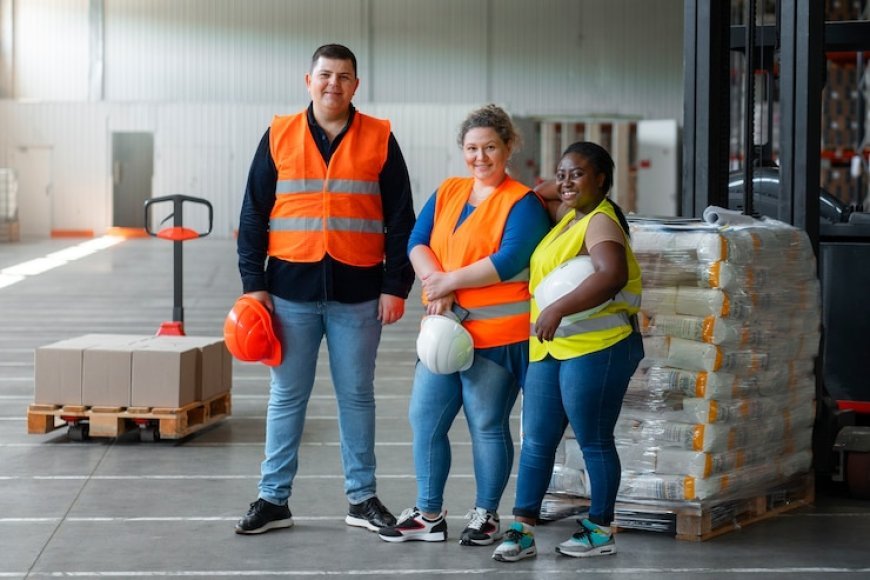How Behavioural Feedback Improves Safety Performance on Site

Improving safety at the workplace is not just about rules and equipment—it’s also about behaviour. You can have all the safety procedures in place, but if people don’t follow them, the risk of accidents remains high. That’s where behavioural feedback comes in. It’s a simple yet powerful tool that can transform workplace culture and significantly reduce incidents.
Behavioral feedback means giving real-time, respectful, and constructive input to workers based on what they’re doing right—or wrong. When used correctly, it helps people correct unsafe behaviours and reinforces safe ones. Over time, this leads to better safety performance on site, fewer injuries, and a stronger safety culture.
ILet’s explore how behavioural feedback can be implemented on-site with a practical step-by-step approach.
Why Behaviour Matters More Than You Think
Most workplace accidents are not caused by equipment failures—they’re caused by human decisions. Whether it’s skipping PPE, ignoring signs, or rushing through a task, unsafe behaviours are often the root cause of serious incidents.
In Pakistan, more industries are recognising the value of behavioural safety practices. As a result, many professionals are now turning to courses like NEBOSH to deepen their understanding of workplace hazards and behaviour-based safety techniques. If you're considering this route, it’s useful to look into NEBOSH course fees early on. This way, you can plan your certification path without surprises and become a qualified voice for safety on your site.
Step 1: Understand What Behavioural Feedback Is
Behavioral feedback is not about punishing people or pointing fingers. It’s about giving information to someone about their behaviour so they can improve or continue what they’re doing well.
Key Characteristics of Good Feedback:
-
Specific, not vague
-
Respectful, not blaming
-
Immediate, not delayed
-
Focused on behaviour, not personality
The goal is to shape behaviour, not shame the person.
Step 2: Identify Unsafe and Safe Behaviours on Site
Before giving feedback, you need to know what to look for. Walk around your site and make a list of:
-
Unsafe behaviours (e.g. not wearing gloves, skipping equipment checks)
-
Safe behaviours (e.g. using ladders correctly, checking gas levels before welding)
This list becomes your foundation. It helps supervisors, team leads, and safety officers stay consistent in what they observe and respond to.
Step 3: Train Supervisors and Workers on Feedback Techniques
Training your team on how to give and receive feedback is critical. Most people don’t naturally know how to do it well—they either avoid it or come across as aggressive.
Train Them To:
-
Use simple language
-
Stay calm and respectful
-
Focus on one issue at a time
-
End with encouragement
This is where structured safety education helps. Programs like NEBOSH include behavioural safety concepts and techniques. Knowing NEBOSH course fees beforehand allows safety professionals to choose the right level of training for their goals and budget.
Step 4: Give Feedback in Real-Time
Timing is everything. The best time to give feedback is right after the behaviour is observed. This helps the person connect your words with their actions.
Let’s say a worker is not using hearing protection in a high-noise area. A good way to approach would be:
“Hey Ahmed, I noticed you’re not wearing your earplugs. This area’s noise level is high today. Can you please wear them now to protect your hearing?”
This keeps it respectful, direct, and focused on behaviour—not on the person.
Step 5: Recognize Safe Behaviour Publicly
People respond well to positive attention. When someone consistently follows safety procedures, recognise them publicly.
Examples:
-
“Team, I want to point out how well Sarah followed the confined space checklist today.”
-
“Let’s appreciate Arif for reporting a potential trip hazard before it caused an accident.”
This creates a culture of recognition where people feel valued for doing the right thing. It also motivates others to improve their safety habits.
Step 6: Encourage Peer-to-Peer Feedback
It’s not just about supervisors giving feedback—encouraging workers to give it to each other. Peer feedback is powerful because it feels less formal and more personal.
Train your team to say things like:
-
“Let’s not forget our helmets here.”
-
“Mind the spill—better to clean it up now.”
When this becomes common, your site naturally moves toward safer behaviour patterns.
Step 7: Track Behaviour Trends
Just like any safety process, behavioural feedback should be tracked and reviewed. Keep a simple log:
-
What types of behaviours were observed?
-
What feedback was given?
-
What were the results?
Over time, you’ll begin to see patterns. Maybe one shift ignores glove use more often, or one department reports more near-misses. These insights can guide further training or policy changes.
Step 8: Link Feedback to Safety KPIs
Want to take things to the next level? Link behavioural feedback to your site’s Key Performance Indicators (KPIs). For example:
-
Number of safe behaviours recorded weekly
-
Reduction in minor incidents over three months
-
Participation in peer feedback initiatives
This makes behavioural feedback part of the overall safety system—not just a “nice-to-have.”
Step 9: Use Feedback in Toolbox Talks
Toolbox talks are a perfect time to discuss feedback. Share examples of good behaviours you’ve seen on-site and invite others to share theirs. This keeps safety discussions real and relevant.
It also shows workers that safe behaviour is being noticed and appreciated.
The Payoff: Why This Works
When feedback becomes part of everyday conversation, safety starts to feel personal. People start to care—not because someone told them to, but because they understand the why behind their actions.
Here’s the result:
-
Reduced accident rates
-
Better morale and teamwork
-
Stronger supervisor-worker relationships
-
Increased ownership of safety at all levels
Read more about the best institute for NEBOSH in Pakistan to find the right course that fits your career goals and helps you bring positive change to your site’s safety culture.
Conclusion
Changing behaviour isn’t always easy, but it’s possible—and extremely effective. By using behavioural feedback as a tool, you can gradually build a work culture where safety is not just a rule but a value.
Start small. Begin by observing, then giving simple feedback—positive or corrective. Train your team, track progress, and celebrate improvements. Before you know it, your site will feel safer, more cooperative, and more focused on doing things the right way.
And remember, feedback doesn’t cost anything—but it can save everything.
What's Your Reaction?






























































